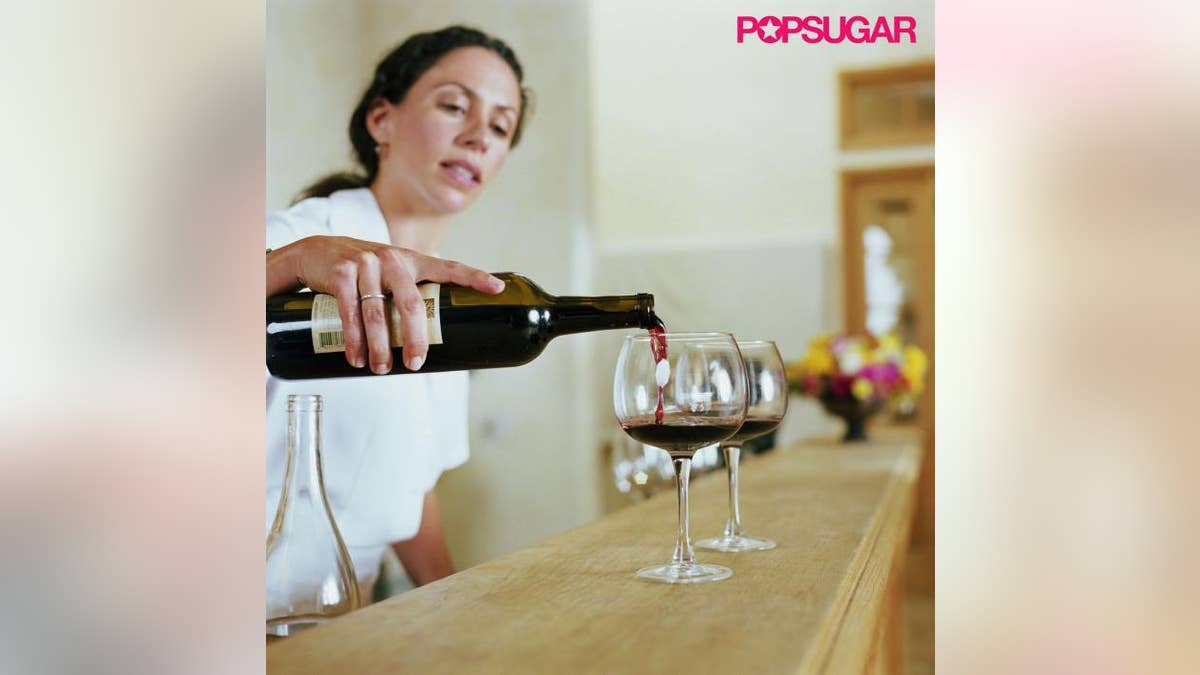
Hearing words like "tannins" and "oxidation" may make you feel like you're back in chemistry class, but they're oh-so-important to the wines we enjoy on the regular. Don't let them intimidate you, though — getting familiar with wine's most common terms can be as easy as pouring a glass of red at the end of a long day. Brush up on these words, and you'll be moving past "sweet" and "dry" in no time, and when you go wine tasting again, you'll be the pro with all the insider knowledge.
Acidity: How tart a wine is (or isn't). Related descriptors include "crisp" and "bright," and the converse: flabby.
Aeration: The act of exposing wine to oxygen to let it "breathe" and mix with air. This is meant to open up the wine's aromas.
Appellation: A specific geographic region where a wine comes from.
Blend: When a wine is made from more than one grape variety.
Body: How heavy or full wine feels in the mouth. Wine is often described as light-, medium-, or full-bodied.
Bouquet: Not related to flowers, this refers to smells that come from aging wines.
Decanting: Pouring wine from the bottle into a decanter, a serving vessel that allows the wine to "breathe." (The act of decanting the wine also aerates it.)
Earthy: A smell or taste related to the earth, such as soil or forest. Most red wines are described as being either earthy or fruity.
Fermentation: The process where yeast turns grape sugars into alcohol.
Finish: A term used to describe how long a wine's flavor lingers in your mouth after swallowing. Wines can either have a short or long finish.
Fortified: A style of wine where extra alcohol is added in the form of a spirit. While table wines are typically between 10 percent and 14 percent alcohol by volume, fortified wines are typically 15 to 22 percent alcohol by volume. Sherry, madeira and port are all fortified wines.
Fruity: A commonly used descriptor for wines that have notes of (you guessed it) fruit like plums, berries or other fruits. While white wines can be fruity, this term is more commonly used with reds.
Horizontal tasting: Tasting wines from different wineries (typically from the same region) that were produced in a specific year.
Jammy: A term used to describe red wines with a cooked fruit flavor.
Magnum: No, this isn't referring to a brand of condom, but rather an oversize bottle that is the equivalent of two standard-size (750ml) bottles.
Minerality: Similar to a wine's earthiness, a wine with strong minerality tastes of the earth, though minerality typically refers to the flavor of stones rather than dirt. This term is more commonly used to describe white wines, though it can be used to describe reds as well.
Oaked: Both white and red wines can be matured in oak barrels (or with oak chips). Oaked wines are sometimes described as having notes of vanilla, cloves, butter, or caramel.
Oxidation: A reaction that occurs when wine is overexposed to oxygen, which causes it to lose brightness in both color and flavor. While this is an undesirable quality in table wine, controlled oxidation is a part of the sherry production process.
Sediment: Solid particles that settle in the bottom of a bottle of wine. While sediment is gritty and unpleasant to consume, it's not a flaw, and is actually a sign of a minimally processed wine.
Tannins: Bitter compounds in the skin and seeds of grapes that give red wine structure. (White wines have little to no tannins as they're typically not fermented on the skins.) While some tannins are desirable, overly tannic wines can cause a drying sensation in your mouth.
Terroir: Terroir refers to how a growing region affects wine's flavor. While this term is most commonly used to describe wine, it can also apply to cheese, coffee beans and other foods.
Varietal: A single variety of grape.
Vertical tasting: A tasting where guests try the same wine (from the same winery) that was made from multiple vintages.
Vintage: A vintage wine doesn't always mean old — it's one made from grapes that were all (or mostly) produced in a single year. A non-vintage wine comes from grapes that were harvested over two or more years. Champagne is typically non-vintage (or NV) for consistency's sake.
